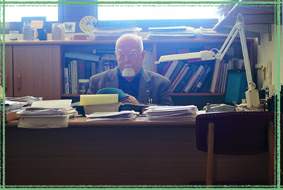Are you a journalist? Please sign up here for our press releases
Subscribe to our monthly newsletter:

Superconductivity is an intriguing phenomenon in which a material cooled to a certain temperature suddenly loses all resistance to electric current, allowing the current to flow indefinitely. When first identified in 1911, superconductivity was thought to be present in metals cooled to several degrees above absolute zero (-273°C) and later in alloys at temperatures not exceeding 25 degrees above absolute zero. But a new era began in 1986, when cuprates - ceramic materials in which copper and oxygen are arranged in a layered structure - were found to become superconductors at much higher temperatures, up to 133 degrees above absolute zero. The discovery made superconductivity vastly more accessible both for research and for potential applications. Cooling an object to these (relatively high) temperatures is comparatively simple and cheap - it can be done with the help of liquid nitrogen, which is much less expensive than the liquid helium required for the classic superconductors. High-temperature superconductivity is now a major branch of physics and materials science, involving thousands of researchers worldwide and promising to lead to numerous practical applications, from superconducting transmission lines to improved MRI machines.
Until now, high-temperature superconductivity was known to exist only in cuprates, but Weizmann Insitute scientists have for the first time demonstrated the phenomenon in an entirely different material. Prof. Shimon Reich and graduate student Yitzhak Tsabba of the Materials and Interfaces Department made this discovery while studying the magnetic properties of tungsten trioxide containing traces of sodium. The scientists were surprised to find that the material showed signs of superconductivity at 91 degrees above absolute zero, or -182°C (-296°F). In a follow-up study conducted in collaboration with Institute colleague Dr. Gregory Leitus and Dr. Oded Millo of the Hebrew University of Jerusalem, the researchers revealed that super-conductivity was not induced throughout the bulk of the material but only at its surface, in tiny microscopic "islands" measuring millionths of a millimeter. Some of these results were corroborated in an electron spin resonance study performed by Nobel laureate Prof. Alex Mueller and Dr. Alexander Shengelaya, both of the University of Zurich, in collaboration with the Weizmann scientists.

In the wake of the Weizmann Institute discovery, Physics World, a popular physics magazine, recently posed the question as to whether high-temperature superconductivity would now result in a shift from the "copper age" to the "bronze age." This tongue-in-cheek comment referred to the fact that cuprates contain copper, while the material used in Reich's study, with its sodium content increased, belongs to the class of so-called tungsten bronzes - metallic compounds widely used as paint pigments because of their ability to produce a striking range of colors. Whether or not the shift occurs, the discovery of an alternative to ceramic cuprates opens exciting new research possibilities in the area of high-temperature superconductivity.